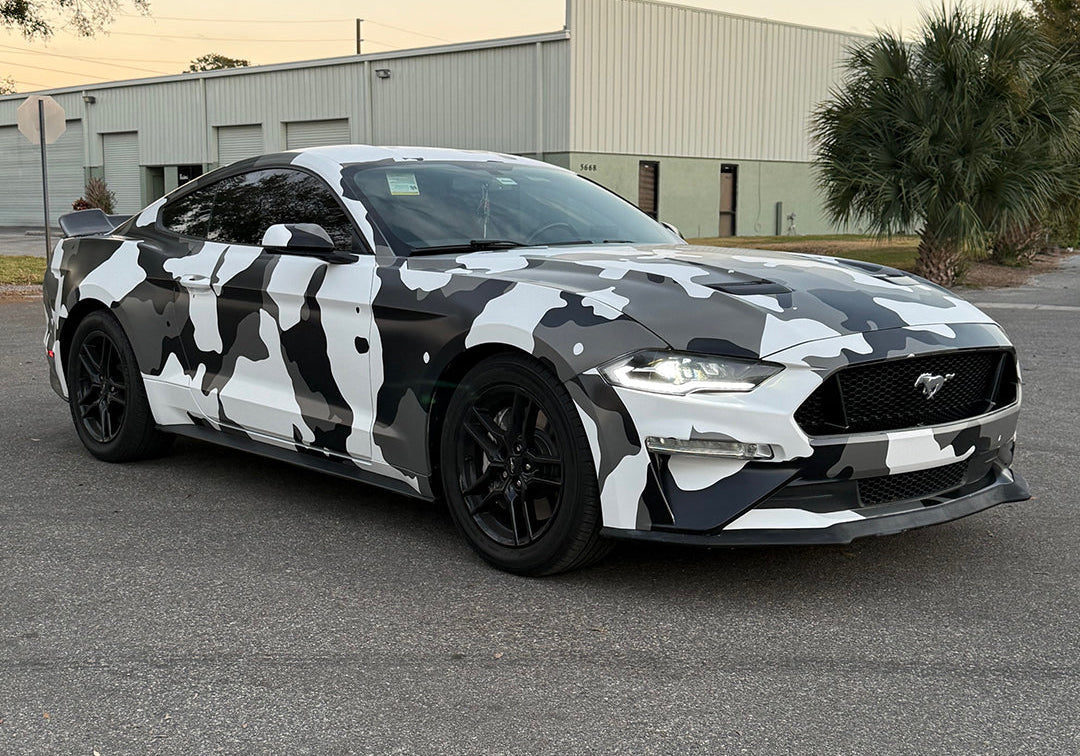From the woods to the range, the right camo can make all the difference in concealment, performance, and even attitude. That’s where GunSkins comes in.
GunSkins produces high-quality vinyl wraps for your AR-15s, pistols, rifles, and shotguns—built tough for real shooters who want performance and style. Whether you’re hunting, training, or showing off your favorite piece, GunSkins helps you do it with purpose.
But to choose the right pattern for your firearm, you’ve got to understand the fundamentals of micro vs macro camo—two camouflage types that play different roles depending on distance, lighting, and environment.
Camouflage is Vital for Concealment
Camouflage is about more than just looking cool—it’s about breaking up outlines, controlling reflection, and blending into your surroundings. In hunting or tactical use, effective camo helps you stay undetected by both human eyes and animal instincts.
Even a subtle pattern can drastically reduce visibility in the right conditions. That’s why GunSkins offers an array of micro camouflage patterns and macro camouflage patterns, giving you options whether you’re in thick brush, open fields, or urban terrain.

Micro patterns excel in close engagements or detailed concealment, while macro patterns are made for blending in at longer distances. The right choice depends on where—and how—you use your firearm.
What is Micro Camouflage?
Micro camouflage patterns are built with fine details, smaller shapes, and intricate designs that disrupt outlines up close. These patterns rely on texture and density to scatter light, making surfaces appear less defined.
Imagine looking at digital or pixelated camo—each small shape blends into the next, creating a complex visual field that breaks up contours even at arm’s length. That’s micro camo in action.

In practice, micro camo is great for environments where targets are close, dense forest, brush, or tactical indoor use. It’s also ideal for smaller firearms, like Pistol Skins, where the tight pattern helps preserve detail across a smaller surface.
Pros of Micro Camouflage:
- Excellent concealment at close range
- Works well on compact surfaces (pistols, magazines, etc.)
- Sharp, detailed aesthetic—perfect for modern and digital camo looks
- Minimizes glare and reflection
Cons of Micro Camouflage:
- Loses effect at long range—can blur into a single color
- May look too “busy” on larger platforms
Micro camo is all about fine-tuned concealment. When you need precision up close, this is your go-to.
What is Macro Camouflage?
Macro camouflage patterns, on the other hand, use large shapes, bold contrasts, and wider spacing to distort outlines from afar. Think of broad leaf patterns, branches, or sweeping gradients. Macro camo is designed to trick the eye at distance, breaking up form and color in open terrain.

If you’re setting up for a shot across a field, a clearing, or open country, macro camo keeps you invisible by disguising your silhouette. It’s not about small details—it’s about the big picture.
This type of camo looks great on larger firearms, like Rifle Skins and Shotgun Skins, because the pattern stays visually balanced even across big panels.
Pros of Macro Camouflage:
- Highly effective for long-range concealment
- Natural and organic look—perfect for outdoor environments
- Eye-catching aesthetic that still feels rugged and functional
- Works well on larger gear and accessories
Cons of Macro Camouflage:
- Less effective up close—edges become easier to spot
- Can overwhelm smaller surfaces if not scaled properly
If micro camo is about precision, macro camo is about dominance. It covers ground, conceals distance, and stands tall where visibility matters most.
Comparing Micro vs Macro Camo
When comparing micro vs macro camo, think of it like the zoom levels of concealment. Micro camo operates on a small scale—tight detail, short-range disruption. Macro camo operates on a large scale—broad pattern, long-range breakup.
For wrap installers, knowing the difference helps you choose the right pattern based on your firearm and intended use:
| Use Case Best | Camo Type Recommended | GunSkins Product |
| Close-quarters or indoor | Micro Camo | Pistol Skins |
| Dense forest or brush | Micro Camo | AR-15 Skins |
| Open terrain or hunting fields | Macro Camo | Rifle Skins |
| Waterfowl or marsh hunting | Macro Camo | Shotgun Skins |
For DIY installers, the choice also affects how forgiving the wrap is. Micro patterns hide small alignment errors, while macro patterns require careful placement to preserve flow.

If you’re applying your first wrap, start with something like micro camo on a smaller firearm—it’s easier to handle and more forgiving during install.
Camouflage Skins for Hunting (Rifle and Shotgun)
For hunters, camo isn’t optional—it’s essential. The right camouflage can make or break a hunt. With GunSkins, you can customize your gear to match the environment perfectly.
Their Rifle Skins and Shotgun Skins are precision-cut for a perfect fit and made from high-performance vinyl built to handle dirt, moisture, and recoil.

Use micro camouflage patterns for wooded hunts or thick brush where animals rely on movement detection up close. Choose macro camouflage patterns for open terrain—where breaking up your outline at a distance keeps you unseen.
Whichever you choose, you’ll get the benefit of protection, durability, and a clean look that performs in the field.
Easy to Install Gun Wraps
Installing a GunSkin isn’t rocket science—it’s straightforward and satisfying. If you can use a heat gun, you can install a wrap.
GunSkins provides step-by-step install videos to walk you through the process. Here’s the short version for the DIY crowd:
- Prep the surface. Clean every inch—no oil, residue, or dust.
- Align the panels. Peel from the backing, place, and reposition if necessary.
- Apply and heat. Use moderate heat to stretch and conform.
- Smooth it out. Work from the center out to remove bubbles.
- Trim edges cleanly. Finish with light heat to seal.
For wrap shops, these vinyl skins are installer-friendly and consistent, meaning faster turnarounds and professional results.
Camo Also as a Lifestyle Aesthetic
Camouflage isn’t just about hiding—it’s about standing for something. It’s about grit, freedom, and the American outdoors. For some, it’s survival gear. For others, it’s heritage.
Even off the field, camo has become part of everyday style. A GunSkins wrap brings that same energy to your firearm—transforming it into a reflection of your passion, precision, and pride.

Micro camo delivers that tactical, tech-inspired edge. Macro camo brings the wild, organic look of nature. Both have their place, and both send a message: you take your craft seriously.
Conclusion
When it comes to micro vs macro camo, it’s not a matter of better or worse—it’s about purpose. Micro camouflage patterns shine in detail and precision, while macro camouflage patterns excel in distance and disruption.
Whatever your mission, GunSkins has the wrap to match it. From AR-15 Rifle Skins to Shotgun Skins and Pistol Skins, every product is built tough, easy to install, and made to perform.
So whether you’re a hunter, a tactical enthusiast, or a DIY installer, GunSkins gives you the tools to personalize, protect, and perfect your firearms with confidence.
FAQ
Q: What’s the difference between micro and macro camo?
Micro camo uses small, fine details for close concealment. Macro camo uses large, bold shapes for long-distance blending.
Q: Which is better for hunting?
Use micro camo for thick cover or brush, and macro camo for open fields or waterfowl terrain.
Q: Can I install GunSkins myself?
Yes! GunSkins are designed for DIY installation—just follow the install videos.
Q: How durable are GunSkins wraps?
They’re made from high-grade vinyl that resists heat, moisture, and abrasion for long-lasting protection.
Q: Do GunSkins wraps affect firearm performance?
Not at all. They’re thin, lightweight, and purely cosmetic—no effect on accuracy or handling.















